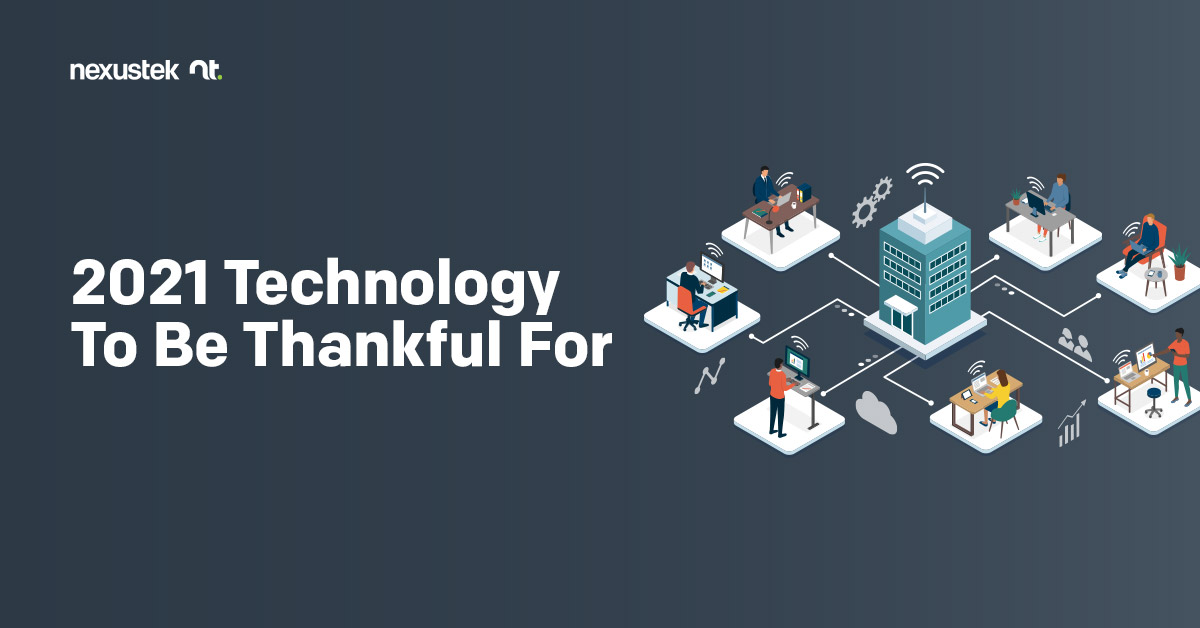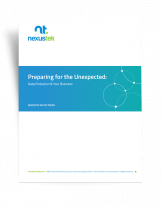READ TIME: 4 MIN

2021 Technology To Be Thankful For
There’s plenty of technology to be thankful for in 2021: dual monitors, automatic standing desks, noise-cancelling headphones, streaming, food service delivery apps, mRNA, which led to the COVID-19 vaccines, etc.
For the purposes of this blog, let’s narrow the focus to trending and emerging technologies that are making businesses faster, more accurate, and more productive. While these technologies may not be brand new, their uses and impacts are still new to many businesses going through their digital transformation journeys brought on by the Fourth Industrial Revolution.
Let’s start counting our blessings.
The Internet of Things
The Internet of Things, or IoT, is not new. In fact, it has been around for over 20 years since Kevin Ashton first coined the term in 1999. IoT did not begin to gain popularity until 2010 when the number of objects or devices connected to the internet (such as smartphones, tablets, fitness trackers, etc.) outnumbered people on the planet. With the onset of IoT came the birth of Industry 4.0, which capitalizes on interconnectivity, automation, machine learning, and real-time data to maximize business operations.
With the widespread shift to distributed business models due to the COVID-19 pandemic, investments into digital solutions to support remote workforces increased. Among these investments were IoT devices and sensors to streamline and automate processes, perform tasks remotely, increase productivity, and collect and analyze real-time data to improve operations and customer service. Thank you, IoT!
Edge Computing
The increased volume of data from IoT devices gave rise to a new IT architecture. Edge computing, distributed and open, analyzes and processes data at or near the original source of data unlike cloud computing, which transmits data to a data center that may be miles away. Edge computing lowers bandwidth costs and decreases latency levels. Rapidly growing, edge computing is forecasted to reach $17.9 billion by 2025, according to Research and Markets.
The addition of edge computing to a distributed cloud-based solution allows businesses to analyze and process data in real-time without impacting the performance of the application itself. Limiting the distance data travels also increases data security and privacy, protecting businesses from cybersecurity breaches, non-compliance fines, and lost customer trust, which is probably the best gift no one ever thinks to wish for.
5G Connectivity
The next generation of the mobile network, 5G is based on multi-access edge computing, leading to increased connection speed and reliability. For example, you could experience 40-50 seconds of lag time on a 4G network, but only 10 milliseconds on 5G. Seeing as how broadband usage increased 47% in Q1 of 2020, slowing down broadband speeds by as much as half, according to Open Vault, companies might consider switching their networks to 5G pronto.
5G makes software-as-a-service (SaaS) products more effective and run smoother and faster simultaneously, so one application’s performance does not impact another app. 5G also allows companies to connect more endpoints, including IoT devices, which will only be enhanced with 5G connectivity. Today’s distributed business model also benefits from the improved mobility of 5G, allowing companies to more reliably connect with remote employees, customers, and new audiences in expanded territories. So, do you want to do more in less time? Yes please!
Remote Services
IoT, edge computing, and 5G networks support remote services, which grew rapidly in 2020. From remote diagnostics to remote monitoring, companies can remotely check the performance of and identify errors in manufacturing equipment, farming technologies, or even ATM machines through the real-time data of their corresponding IoT connections. This proactive maintenance can eliminate issues before they arise and avoid unplanned downtime.
Utilizing mobile devices, interconnected equipment, and remote monitoring management tools, IT service desks can also remotely support distributed workforces. Remote employees do not have to commute to offices or mail their devices in order to troubleshoot their issues. Service desk technicians can remote into their devices from anywhere and resolve the problem at any time. Remote services lead to increased employee productivity and improved customer satisfaction. Oh, remote services, where would we be without you?
Security
Since 5G is mostly software-based, cybersecurity can be written into anything connected to the network, improving data analysis and threat detection. However, devices that sit on the network’s edge (like in edge computing) are more vulnerable to cyber breaches. With IoT connections expected to reach 30.9 billion by 2025, according to Statista, the number of vulnerable entry points is high.
That’s why a multilayered cybersecurity approach is quite possibly the technology to be most thankful for. Firewalls and anti-virus software won’t cut it. Businesses need endpoint security, multifactor authentication, email security, incident response, Security Information and Event Management (SIEM), and vulnerability scans of network edges. In case of a security breach, a business continuity/disaster recovery plan wouldn’t be a bad idea either. All of these elements work together to build protection, detect threats, and eliminate breaches, ultimately avoiding non-compliance fines and leading to increased system uptime and improved brand reputation.
The Fourth Industrial Revolution is upon us, resulting in improved business operations thanks to the power of IoT, the speed of edge computing, the capability of 5G, the flexibility of remote services, and the protection of cybersecurity. Companies that embrace the possibilities of such digital solutions will be forever grateful as they keep pace with ever-increasing customer demands and outstrip competitors. If your business has yet to invest in remote service desk support or a multilayered cybersecurity plan, NexusTek’s managed IT services and managed cybersecurity plans feature multiple variations with customizable options so that you can find that right solution for your business.






